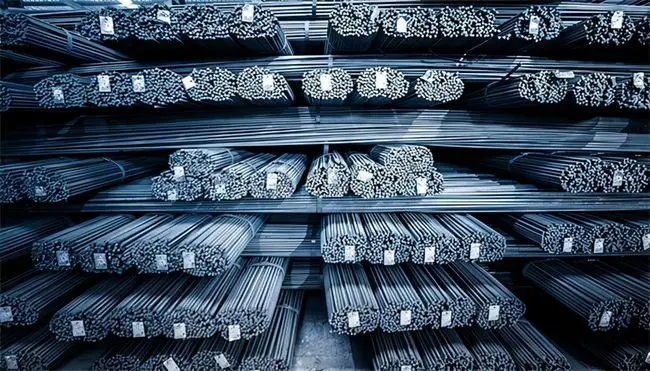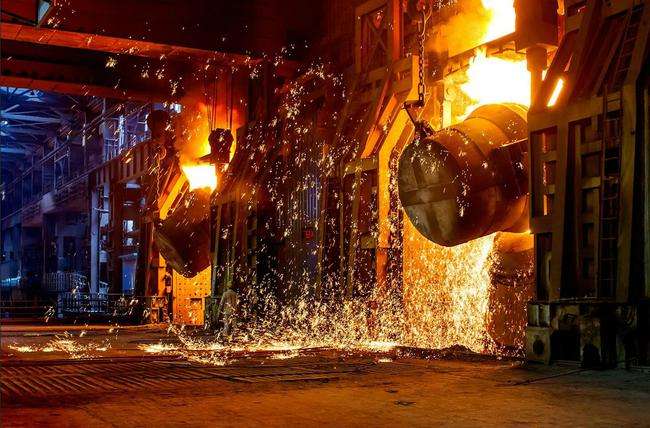The cyclical fluctuation of steel prices is a comprehensive reflection of the market cycle of the steel industry, and it is the result of the chain effect of the price-benefit-investment-capacity-supply-demand relationship. So what are the influencing factors of steel prices?
On the whole, the following factors affect the changes in steel prices: First, production costs, which are the basis for changes in steel prices. The second is the relationship between supply and demand, which is a key factor influencing changes in steel prices. The third is the market system. A defective market system may amplify the imbalance between supply and demand and cause price fluctuations.
1. The composition of cost elements
① Cost of raw materials: Iron ore is the most important raw material for steel production. The prices and quantities of imported ore and domestic ore purchased by different steel companies are different, and the technical and economic indicators of their respective blast furnaces are different, so the raw material costs of various steel companies are quite different.
② Energy cost: Coke is a necessary reductant, fuel and pillar framework for steel production. At the same time, steel production also consumes a large amount of public media such as coking coal, water, electricity, wind, gas, and oil. The prices and quantities of these public media purchased by different steel companies are different, and their respective technical and economic indicators are different. Therefore, the costs of energy and public media for each steel company are quite different.
③ Labor cost: Labor cost is an important cost in the steel industry. Although there is a big gap between China's physical labor productivity and developed countries, the gap in unit labor-hour costs (mainly per capita income level) is even greater. Therefore, the labor cost of China's steel ton shipment is about one-third of that of developed countries and one-half of the foreign average. On the whole, the labor cost gap between Chinese steel companies is not obvious.

④ Depreciation and interest: Large equipment investment is an important feature of the steel industry. Globally, in addition to fast depreciation in Japan, steel companies in the United States, Europe, South Korea, and China generally use normal depreciation, while Russia has the slowest depreciation rate. As the steel industry is a capital-intensive industry, the asset-liability ratio of Chinese steel companies is generally above 50%. Therefore, changes in national monetary policy will seriously affect the financial expenses of steel companies.
Affected by the substantial increase in steel production capacity and the shortage of raw steel and fuel supply, the prices of raw steel and fuel such as iron ore and coke have risen sharply since 2001. Especially since 2004, the long-term contract price of imported iron ore has risen sharply year after year, which has caused the iron ore purchase cost of iron and steel enterprises to rise sharply. Compared with 2002, the international long-term contract price of iron ore increased by 288.9% in 2007. In 2007, the average purchase cost of domestic iron concentrate for large and medium-sized steel companies increased by 108.2% compared with 2003, and the purchase cost of coking coal increased by 91.7%.
The increase in raw material and fuel prices has greatly increased the production costs of steel companies. In 2007, the average cost of steel-making pig iron for large and medium-sized steel companies increased by 71.8% compared with 2003, ordinary carbon slabs rose by 56.2%, and hot-rolled coils rose by 56.6%.
In mid-February 2008, Brazil's Vale, the world's largest iron ore supplier, reached agreements with major global steel producers on the supply price of iron ore in 2008. The benchmark price rose by 65% from the previous year. Further increase the production costs of domestic steel companies.
2. Equipment and technology level
During the "Tenth Five-Year Plan" period, the investment of steel enterprises in improving equipment level, technological progress, energy saving and consumption reduction has increased significantly, which has significantly improved the equipment level of China's iron and steel industry. Cost played a big role.

3. Investment cost per ton of steel
The steel industry is a capital-intensive industry, and the level of investment costs is also an important factor affecting steel prices. Since 2001, investment per ton of steel has shown a downward trend.
The main reasons for the sharp drop in steel investment per ton during the Tenth Five-Year Plan:
① The proportion of private enterprises has increased significantly. 2001-2003 was a period of great development of private enterprises. During this period, the product positioning of private enterprises was mostly low value-added products such as long products and narrow belts, and they usually used domestically-made equipment, which resulted in low investment and quick recovery. Generally, the investment in the scale of one million tons is about 1 billion yuan, and the average comprehensive investment per ton of steel is only more than 1,000 yuan.
② The level of equipment localization has been greatly improved, saving investment costs. For example, a set of high-speed wire domestic equipment is only equivalent to one-fifth of imported equipment. Not only private enterprises use a large number of domestically-made equipment, some super large state-owned enterprises are also increasingly using domestically-made equipment.
③ The iron and steel industry is an industry with very obvious scale benefits. With the large-scale equipment, the continuous and compact production, the unit product investment has dropped significantly.
4. Supply and demand and economic cycle
Although production costs are the basis for price changes in steel products. However, the relationship between supply and demand is an important factor affecting price trends. In the case of relatively stable costs, when supply exceeds demand, prices will fall; when supply exceeds demand, prices will rise. It can be seen from the changes in China's GDP growth rate and fixed asset investment growth rate that steel prices have a strong correlation with China's economic cycle.